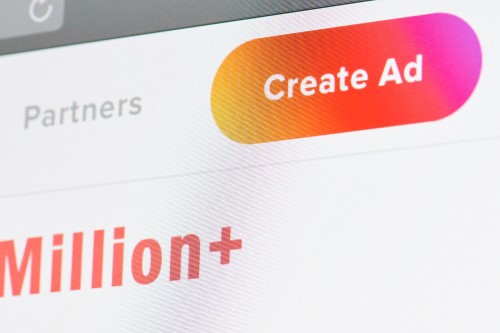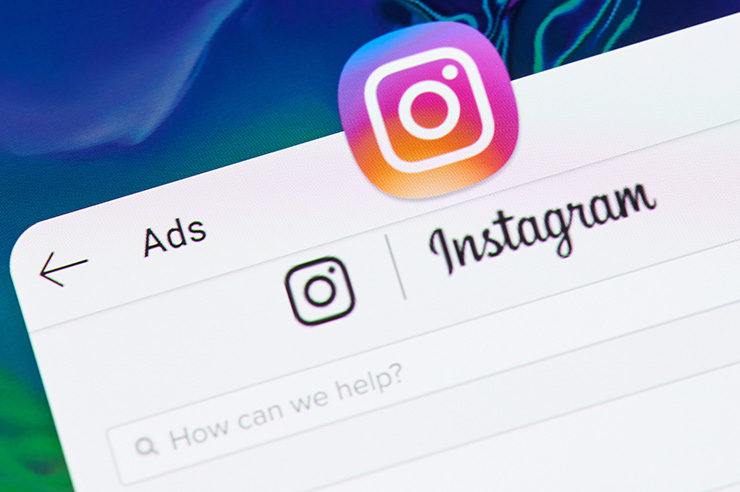Since its release in 2010, Instagram has evolved into the ideal platform for brands looking to share and connect. When Instagram ads launched in 2015, it was clear that the company was committed to supporting its commercial users.
Nearly seven years later, these ads are more powerful than ever, and they’re also more popular, making it difficult to stand out. In this first in a series of articles, we’re providing a comprehensive primer to help you get started.
Chapter 1: An Introduction to Instagram Ads
Chapter 2: Types of Instagram Ads & Campaign Objectives
Chapter 3: How to Setup and Create Instagram Ads
Chapter 4: Instagram Business Analytics: How to Measure Ad Success
Chapter 5: Instagram Ads for Businesses: FAQs & Best Practices
An Introduction to Instagram Ads
If you’ve never advertised on Instagram or want to level up your efforts, this guide is for you. Here we will review Instagram ads and go over important points, including:
- How much are Instagram ads?
- Determining whether Instagram ads are right for your business
- The benefits of advertising on Instagram
All of this will give you a great overview of ads on Instagram and prepare you to launch a successful Instagram ad campaign.
What Are Instagram Ads?
 Instagram ads look very much like other posts on the platform. The key difference is that businesses pay to serve these posts to a targeted audience.
Instagram ads look very much like other posts on the platform. The key difference is that businesses pay to serve these posts to a targeted audience.
Additionally, ads have special features. For example, they often have CTA buttons, links, and the company’s product catalog. These ads are also tagged with the word “sponsored,” so it is clear they are intended to sell something.
More businesses are choosing to advertise on Instagram because it’s the ideal platform for reaching out to potential customers with engaging, visual content. Instagram also averages more than a billion users monthly, a tremendous reach, and Instagram ad revenue has been steadily on the rise since 2018.
How Much Do Instagram Ads Cost?
It’s difficult to state a precise price point for Instagram ads. There are too many factors that can influence the final cost. Some of these are:
- Timing (costs are higher near holidays or other high-demand periods)
- How your ads are targeted
- Placement on Instagram vs. Facebook
- Industry competition
Fortunately, there is a way to see if your budget is adequate. Simply go into Ads Manager to set up a test campaign. You can use the Audience Definition and Estimated Daily Results to predict whether your campaign will have the desired effects.
Because there are so many variables, there is no right amount of money to spend. Frequently, the best approach is to simply start with a small budget and make adjustments accordingly. You can set a daily or lifetime budget for each campaign.
Are Instagram Ads Right for My Business?
You have to determine whether your target audience is on Instagram to answer this question. If they are, you’ll need to figure out what they’re doing there. Are they likely to be interested in shopping for products and services or engaging with your brand?
As with any other marketing effort, start with demographics.
Most users are under 50. The largest age demographic on Instagram is 18 to 34 years old. Usage drops significantly in the over-35 demographic and virtually disappears among the over-55 crowd. It’s also notable that more men than women use Instagram in the 18 to 34 bracket.
 Age and gender aren’t the only stats that matter. It’s also important to realize that suburban and urban residents use Instagram at much higher rates than people who live in rural areas.
Age and gender aren’t the only stats that matter. It’s also important to realize that suburban and urban residents use Instagram at much higher rates than people who live in rural areas.
If you conclude that your target audience isn’t active on Instagram, that doesn’t mean you should ignore the platform entirely. As Instagram continues to grow, adults over 30 will probably become late adopters. You can also engage in some direct targeting of your audience members who are on Instagram.
In addition to demographics, your industry should also be a consideration. Some products and services are simply a better fit for the visual nature of Instagram advertising than others. If you can use images, videos, and storytelling to grab attention on Instagram, you will probably see a better return on investment.
It may also help to know that the most popular topics on Instagram are food, fashion, fitness, inspiration, nature, and health. Businesses that can leverage these topics in a meaningful way will get the best results from their campaigns.
Top Benefits
If you believe that you can reach an interested audience on Instagram, it’s probably worth giving paid ads a try. Here are a few of the benefits you might experience.
Better Targeting
If you stick with organic posting on Instagram, you are limited in how you target your content. At best, you can simply choose content and hashtags that you believe will resonate with your target audience. However, you don’t have any control over who sees those posts.
Conversely, when you use paid ads on Instagram, you can target potential customers according to their location, demographics, online behaviors, interests, and more. Doing so means your ads appear on the feeds of the people who are most likely to be interested in your products.
Access to Analytics
It’s much easier to track the results of a paid advertising campaign and to make necessary adjustments. Instagram analytics will allow you to track and compare the results of your campaigns, which includes showing you how many conversions you have earned and how much money you have spent.
Custom Budgeting
Advertising campaigns can be created to accommodate any budget. Also, since Instagram is pay-per-click, you won’t pay anything unless somebody makes a direct purchase on Instagram or goes to your website.
Increase Brand Awareness
Because you can use targeting so precisely, you have the opportunity to get your brand in front of new audiences.
For example, if you believe there is untapped market potential in a certain demographic, you can target your ads to that demographic. When you do that, you increase your reach and boost brand awareness, and this boost could also lead to more conversions and website traffic.
